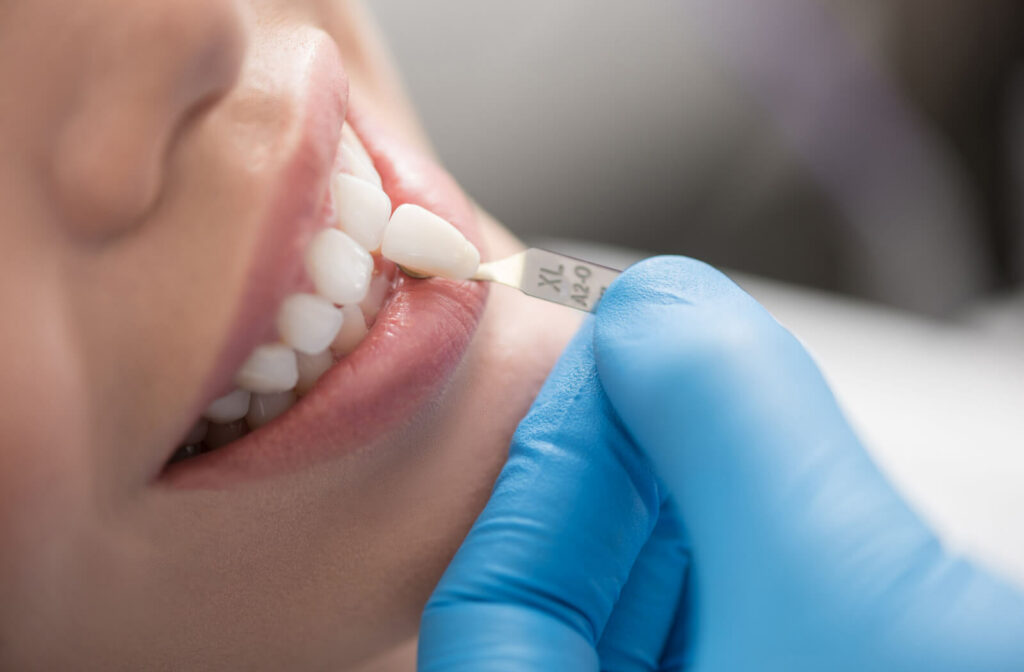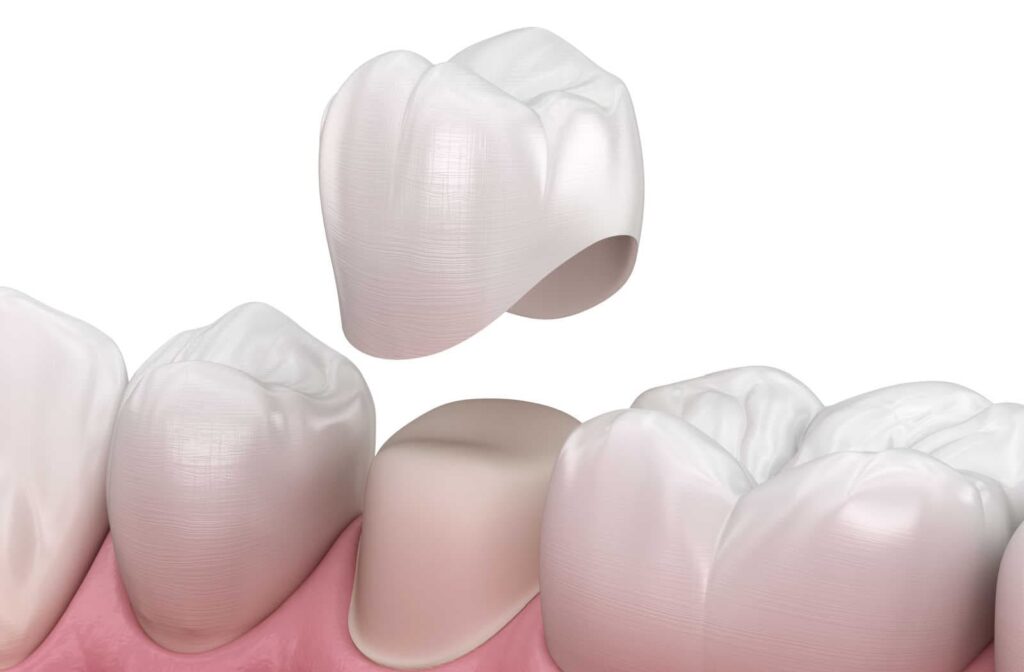Dental crowns are a popular solution for restoring damaged or decayed teeth. These custom-made caps are designed to fit perfectly over the top of your tooth.
But what if your crown is damaged or needs to be replaced? Are dental crowns replaceable?
Dental crowns can and should be replaced if necessary due to wear and tear, bite changes, discolouration, or decay.
What Is a Dental Crown?
Dental crowns are an effective way to repair broken teeth. Crowns provide protection and help restore your tooth’s appearance and shape when traditional fillings aren’t enough.
Crowns are made of a variety of materials designed to resemble natural teeth, including:
- Metal
- Porcelain
- Resin
- Ceramics
- Or a combination of these materials
Dental crowns do require maintenance over time including visiting your dentist for regular cleanings and proper oral hygiene with brushing and flossing. In fact, by using a crown, you can either maintain or significantly improve the appearance of your smile.
So, if you have a damaged tooth, think about getting a dental crown to restore its health and appearance.

Why Would a Crown Need to Be Replaced?
Like any other dental treatment, crowns can wear and tear over time and may no longer provide an optimal fit or appearance. If this happens, you may need to consider a dental crown replacement.
- Wear and tear: With normal use, dental crowns can be worn or damaged over time. As a result, they may get loose, crack, or the surface of the crown can wear through due to teeth grinding.
- Changes in bite: As the mouth changes over time, so can the way teeth come together. If this occurs, the crown may need to be replaced to ensure proper bite and function.
- Discolouration: Ceramic or porcelain dental crowns can become discoloured or stained over time, affecting their appearance. In these cases, tooth replacement may enhance the tooth’s appearance, as porcelain and ceramic cannot be bleached or whitened.
- Decay: Sometimes, decay can occur at the edge of a crown, and can then progress to under the crown, causing damage to the tooth. The crown will need to be removed, the decay needs to be treated, and then the crown replaced with a new one.
Dental Crown Care
Proper care is essential to ensure that your new crown lasts as long as possible. Here are some suggestions to help you take the best care of your dental crown.
Brush & Floss Regularly
Your dental crown, like your natural teeth, should be brushed and flossed daily to remove plaque and food particles.
Brush gently with a soft-bristled toothbrush and fluoride toothpaste to help avoid decay around your new crown. Floss gently between your teeth and make sure you floss the edge of your crown to remove plaque and food particles.
Avoid Biting Down on Hard Foods
Excessive biting pressure can damage dental crowns, so avoid biting on hard objects like ice, popcorn kernels, and hard candy. This will help to keep the crown from chipping or cracking.
Go for Regular Dental Checkups
Regular dental checkups are essential to ensure that your crown fits properly and identify any potential problems early on. Your dentist will also be able to clean your teeth and crown, as well as examine them for signs of wear and tear.
Remember That Your Teeth Are Not Tools
Using your teeth to open packages, tear tags, or even chew on pencils can cause damage to your crown and other teeth.
Pay Attention to What You Eat & Drink
Avoid foods and drinks that can stain your teeth to help keep your porcelain or ceramic crowns looking their best. Foods and drinks to try and avoid include:
- Coffee
- Tea
- Red wine
- Dark berries
- Red sauces
- Dark sodas
Eating and drinking these things in moderation can help reduce the risk of staining. Brushing and flossing regularly, as well as visiting your dentist for routine cleanings, can help remove surface stains.
What to Expect when Getting a Crown Replaced
If your dental crown is damaged, worn out, or no longer fits properly, here is what you can expect when having it replaced:
- Examining the tooth: Your dentist will examine your teeth and take X-rays.
- Preparing the tooth for the new crown: By removing the old crown, removing the old cement, and shaping the tooth to accept the new crown. With today’s new technology, removing a crown can be a simple process.
- Impression: To create a mould for the new crown, your dentist will take an impression of the prepared tooth or with new computer/laser technology the dentist can take a scan of the prepared tooth, creating a 3D model of the tooth which the crown is placed on.
- Temporary crown: While you wait for the permanent crown to be made, a temporary crown may be placed. However, if you’re having a CEREC crown, there’s no temporary crown to be placed as your crown will be fabricated at the same appointment.
- Placement: The permanent crown will be cemented in place over the prepared tooth.
Aftercare instructions will be provided by your dentist, which may include avoiding certain sticky foods and activities for that day.
Need Your Dental Crown Replaced?
Replacing a dental crown is a straightforward procedure that is similar to getting a filling, but has a few more steps. With advanced technology like CEREC, it allows you to replace a crown in one appointment. Replacing a crown can help restore the appearance and function of your damaged or worn-out crown.
Your new crown will last for many years if properly cared for and maintained. If you have any questions or concerns, please contact the team at Southgate Dental Centre for professional advice and assistance.



